Engine mounts represent one of the most critical yet often overlooked components in any truck’s mechanical architecture. These seemingly simple rubber and metal assemblies serve as the crucial interface between your truck’s powerplant and its chassis, absorbing vibrations, controlling engine movement, and maintaining proper alignment of drivetrain components.
When engine mounts function properly, they operate invisibly, allowing drivers to enjoy smooth operation and comfortable rides. However, when they fail, the consequences can be immediate and severe, ranging from excessive cabin vibration and noise to potential damage of surrounding components and safety hazards.
The engineering behind engine mounts varies significantly across manufacturers and model lines. Some trucks feature robust, over-engineered mounting systems that can withstand decades of abuse, extreme weather conditions, and heavy-duty applications without showing signs of wear.
These bulletproof designs often incorporate superior rubber compounds, reinforced metal brackets, and thoughtful positioning that distributes stress evenly across multiple mounting points.
Conversely, certain truck models have gained notorious reputations for engine mount failures, often stemming from cost-cutting measures, inadequate testing, or fundamental design flaws.
These problematic mounts can fail prematurely, sometimes within the first few years of ownership, creating frustrating and expensive repair scenarios for truck owners.
Understanding which trucks fall into each category can save potential buyers thousands of dollars in unexpected repairs and help current owners make informed maintenance decisions.
5 Trucks With Bulletproof Engine Mounts
These exceptionally engineered mounting systems feature heavy-duty rubber compounds and reinforced steel brackets that maintain precise engine positioning through decades of heavy-duty operation and extreme loading conditions.
Their robust construction includes oversized mounting points and premium vibration-dampening materials that resist the tremendous stress forces generated by high-torque engines under maximum payload and towing scenarios.
From extreme temperature cycling that degrades inferior rubber compounds to the constant shock loads of off-road driving, these superior engine mounts continue providing stable support without cracking or separation.
Owners consistently report original mounts lasting 300,000+ miles with these dependable trucks a critical reliability feature that prevents costly drivetrain damage and maintains smooth operation throughout ownership.
1. Toyota Tacoma (2005-2015 Generation)
The second-generation Toyota Tacoma stands as a testament to Japanese engineering excellence, particularly in the realm of engine mount durability.
Toyota’s approach to engine mounting in this generation represents a masterclass in conservative engineering, where longevity takes precedence over cost optimization.
The Tacoma’s engine mounts utilize a sophisticated three-point mounting system that distributes engine weight and vibration across multiple strategically positioned mounts, each designed with specific load characteristics in mind.
The primary engine mount, located at the front of the engine block, features a robust rubber compound that maintains its elasticity even under extreme temperature variations.
This mount incorporates a unique hourglass design that allows for controlled movement while preventing excessive engine rock during acceleration and deceleration.
The side mounts employ a different rubber formulation, slightly softer to absorb high-frequency vibrations while maintaining structural integrity under lateral loads.
What sets the Tacoma’s engine mounts apart is Toyota’s use of premium rubber compounds that resist ozone degradation, oil contamination, and temperature extremes.
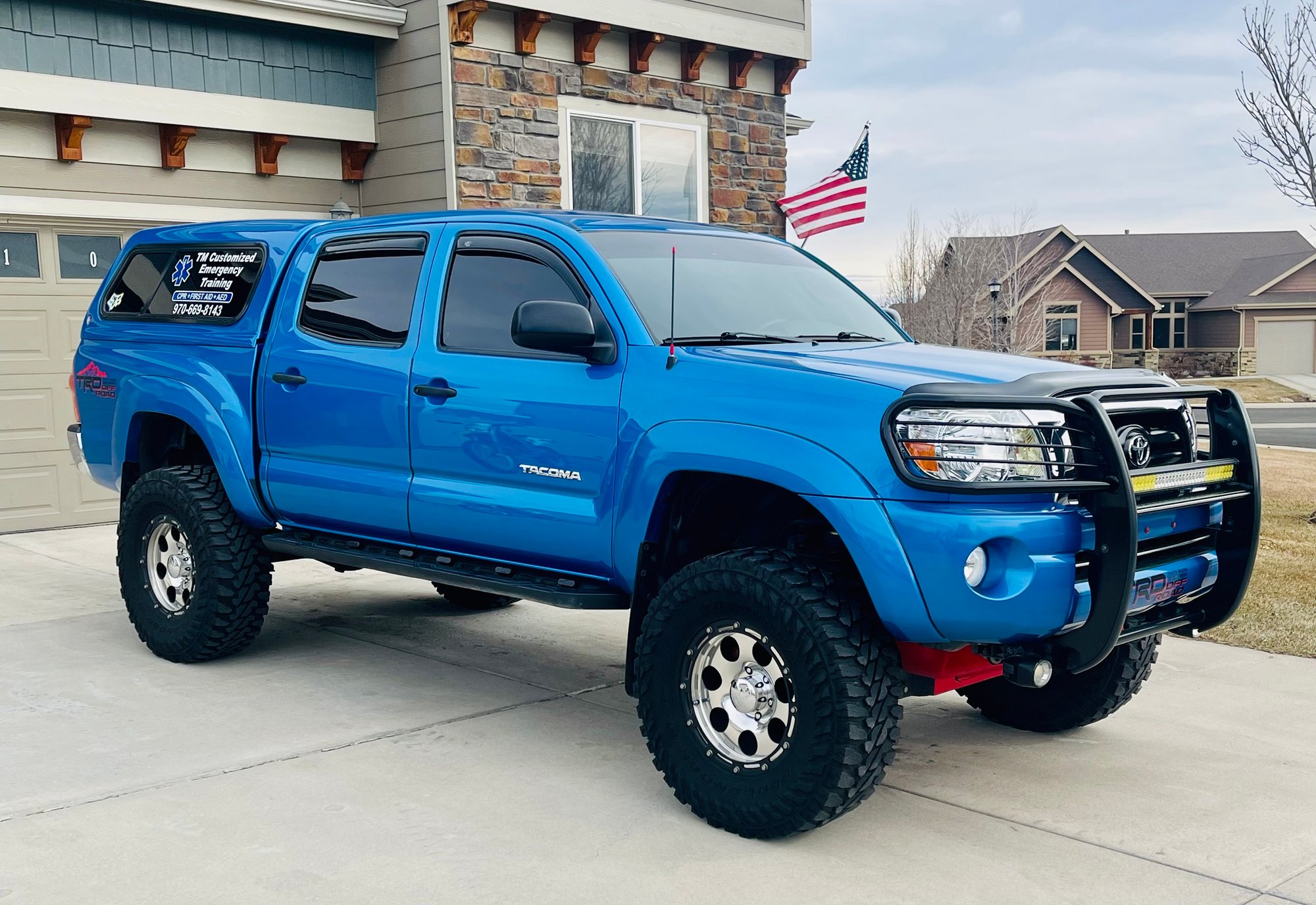
The mounting brackets themselves are constructed from high-grade steel with corrosion-resistant coatings, ensuring that even in harsh environments, the structural components remain sound long after other manufacturers’ mounts would have succumbed to rust and deterioration.
Field reports consistently show Tacomas with original engine mounts functioning properly well beyond 200,000 miles, with many examples approaching 300,000 miles without replacement.
This exceptional longevity stems from Toyota’s rigorous testing protocols, which subject prototype mounts to accelerated aging tests equivalent to decades of real-world use.
The company’s commitment to quality control ensures that each mount meets strict specifications before installation, eliminating the variability that plagues some manufacturers.
The engineering philosophy behind these mounts reflects Toyota’s understanding that pickup trucks serve diverse roles, from daily commuting to heavy hauling and off-road adventures.
The mounts must accommodate not only the standard vibrations of normal operation but also the increased stresses of loaded hauling, trailer towing, and the shock loads associated with off-road driving.
This versatility, combined with exceptional build quality, makes the Tacoma’s engine mounts virtually bulletproof in normal service conditions.
2. Ford F-150 (2009-2014 Generation)
Ford’s twelfth-generation F-150, produced from 2009 to 2014, represents a high-water mark in engine mount engineering for the Blue Oval. During this period, Ford invested heavily in improving the durability and refinement of their truck platforms, and the engine mounting system received significant attention from the engineering team.
The result was a mounting system that combines exceptional durability with impressive vibration isolation characteristics. The F-150’s engine mount system during this generation utilizes a four-point mounting configuration that provides superior stability and load distribution compared to simpler three-point systems.
The front mount, positioned behind the radiator, features a large-diameter rubber element with internal damping chambers that help control engine movement during rapid acceleration or deceleration.
This mount is specifically tuned to handle the high torque output of Ford’s various V8 engines while maintaining smooth operation at idle. The side mounts employ an innovative design that incorporates both vertical and horizontal load-bearing surfaces, allowing them to control engine movement in multiple directions simultaneously.
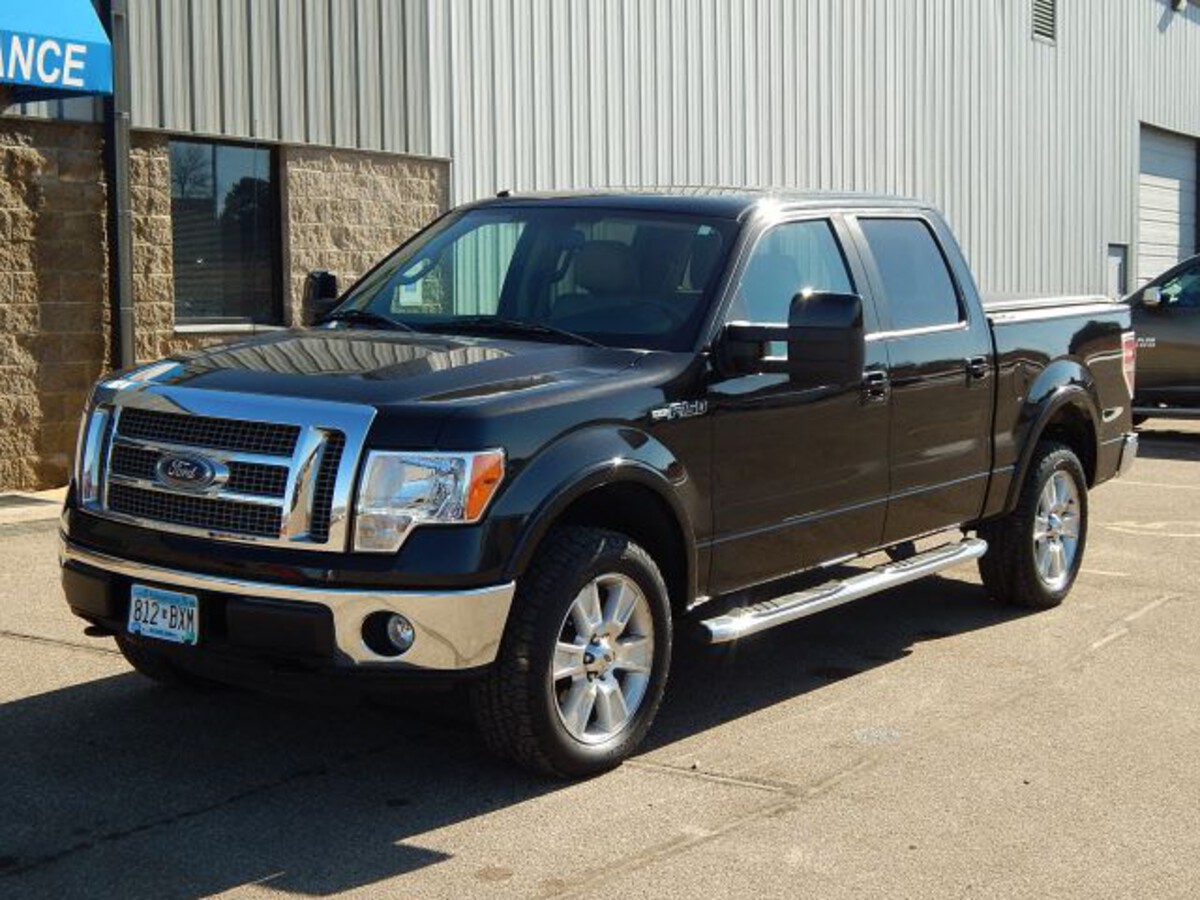
The rubber compounds used in these mounts feature a unique blend of natural and synthetic rubbers, optimized for longevity and temperature stability.
Ford’s engineers conducted extensive testing in extreme climates, from the frigid winters of Alaska to the scorching heat of Arizona deserts, ensuring that the mounts maintain their properties across the full range of operating conditions.
The rear mount, often called the transmission mount, deserves special recognition for its robust construction. This mount must handle not only engine vibrations but also the additional loads imposed by the transmission and driveline.
Ford’s design incorporates a substantial rubber element surrounded by a reinforced steel housing that provides exceptional durability even under the most demanding conditions.
Quality control during this generation was exemplary, with Ford implementing statistical process control methods to ensure consistent rubber curing and precise dimensional tolerances.
This attention to detail resulted in engine mounts that routinely exceed 150,000 miles of service life, with many examples surpassing 200,000 miles without any signs of deterioration.
The mounts’ ability to maintain their vibration-damping properties throughout their service life contributes significantly to the F-150’s reputation for long-term comfort and refinement.
3. Chevrolet Silverado 1500 (2007-2013 Generation)
General Motors’ GMT900 platform, which underpinned the 2007-2013 Chevrolet Silverado 1500, featured one of the most robust engine mounting systems ever developed by the company.
This generation marked a significant departure from previous GM truck platforms, with engineers focusing intensively on long-term durability and noise, vibration, and harshness (NVH) control.
The resulting engine mount system represents a perfect balance between durability and refinement. The Silverado’s mounting system employs a sophisticated approach that varies depending on the engine option, but all configurations share common design principles focused on longevity.
The base mounting system uses three primary mounts: two side mounts and one rear mount, with certain engine configurations adding a fourth mount for additional stability.
Each mount is carefully tuned for its specific location and load requirements, with rubber compounds formulated to provide optimal performance characteristics.
The side engine mounts feature a unique dual-durometer design, where the outer rubber layer provides vibration isolation while an inner, stiffer rubber core handles primary load-bearing duties.
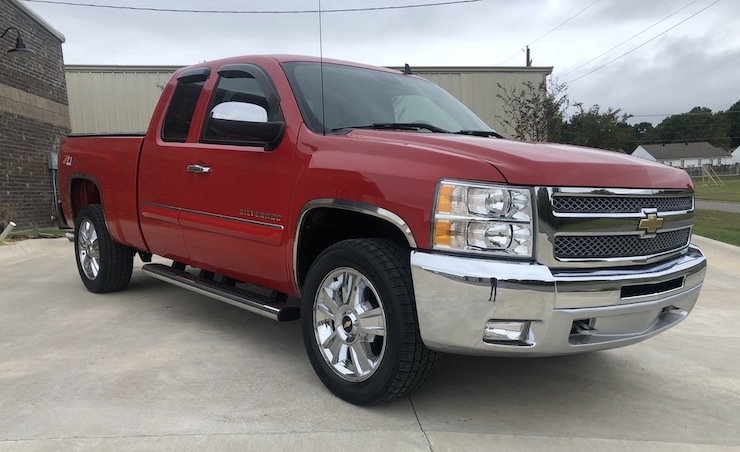
This design allows the mounts to provide excellent vibration dampening during normal operation while preventing excessive engine movement under high-load conditions such as heavy acceleration or trailer towing.
The metal components of these mounts utilize high-strength steel with advanced coating systems that provide exceptional corrosion resistance. What truly sets the GMT900 Silverado’s engine mounts apart is General Motors’ extensive use of computer simulation and real-world testing during development.
Engineers utilized advanced finite element analysis to optimize the shape and composition of each mount, ensuring that stress concentrations were minimized and fatigue life was maximized.
The development process included rigorous durability testing on GM’s proving grounds, where test vehicles accumulated hundreds of thousands of miles under various loading conditions.
The manufacturing quality of these mounts reflects GM’s commitment to long-term reliability during this period. Each mount undergoes precise curing processes that ensure consistent rubber properties, while dimensional tolerances are maintained within tight specifications to guarantee proper fit and function.
The result is engine mounts that commonly exceed 175,000 miles of service life, with many examples approaching or surpassing 250,000 miles without requiring replacement.
4. Nissan Frontier (2005-2021 Generation)
The Nissan Frontier’s remarkably long production run from 2005 to 2021 provided engineers with ample opportunity to refine and perfect the truck’s engine mounting system.
While some might view the Frontier’s extended production cycle as a sign of stagnation, the reality is that Nissan used this time to continuously improve component quality and address any reliability issues that emerged in early production years.
The result is an engine mounting system that ranks among the most durable in the mid-size truck segment. Nissan’s approach to engine mounting in the Frontier reflects the company’s philosophy of conservative engineering and proven technology.
The mounting system utilizes a three-point configuration with exceptionally robust construction at each mounting location. The front engine mount, positioned low in the engine bay, features a large rubber element that provides excellent vibration isolation while maintaining precise engine positioning.
This mount’s design incorporates internal voids that allow for controlled compression and rebound, effectively filtering out engine vibrations across a wide frequency range.
The side mounts employ Nissan’s proven hydraulic mount technology, which uses fluid-filled chambers to provide superior vibration dampening compared to conventional solid rubber mounts.
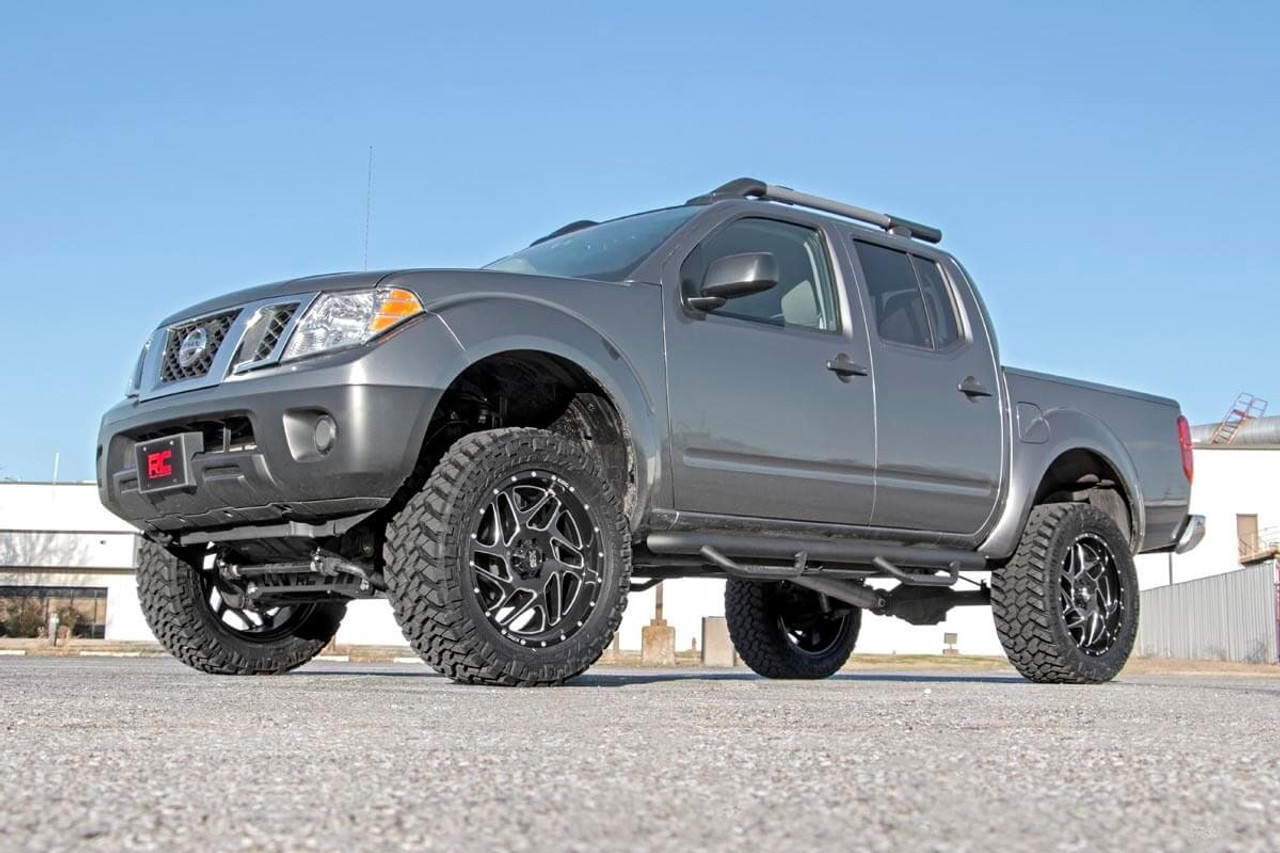
These hydraulic mounts automatically adjust their damping characteristics based on the frequency and amplitude of engine vibrations, providing optimal comfort during idle while maintaining stability during high-load operation.
The hydraulic fluid used in these mounts features long-term stability and temperature resistance, ensuring consistent performance throughout the mount’s service life.
Manufacturing quality control for Frontier engine mounts reflects Nissan’s commitment to long-term reliability. Each mount undergoes rigorous quality testing, including pressure testing for hydraulic mounts and durometer testing for rubber components.
The metal brackets and housings are manufactured from high-grade steel with multi-layer coating systems that provide exceptional corrosion resistance, even in harsh environments where road salt and moisture are common.
Field experience with Frontier engine mounts consistently demonstrates exceptional longevity, with many trucks surpassing 200,000 miles on original mounts.
This durability stems from Nissan’s conservative design approach, which prioritizes long-term reliability over absolute performance optimization. The company’s extensive testing protocols ensure that mounts can withstand not only normal operating conditions but also the extreme stresses associated with off-road driving and heavy hauling that are common in the Frontier’s target market.
Also Read: 5 Engines That Never Burn Coolant and 5 That Always Need Top-Ups
5. Honda Ridgeline (2006-2014 Generation)
Honda’s first-generation Ridgeline brought a unique approach to truck design, and this innovation extended to the engine mounting system. Built on Honda’s proven unibody construction rather than traditional body-on-frame architecture, the Ridgeline required a completely different approach to engine mounting.
The result was a system that leveraged Honda’s extensive experience with automotive engine mounts while adapting the technology for truck-specific applications.
The Ridgeline’s engine mounting system utilizes Honda’s advanced Active Control Engine Mount (ACM) technology, which represents one of the most sophisticated approaches to vibration control in the truck segment.
This system employs electronically controlled mounts that can actively adjust their damping characteristics in real-time based on engine operating conditions and detected vibration patterns.
The system uses sensors to monitor engine vibrations and employs actuators within the mounts to generate counter-vibrations that cancel out unwanted engine movement.
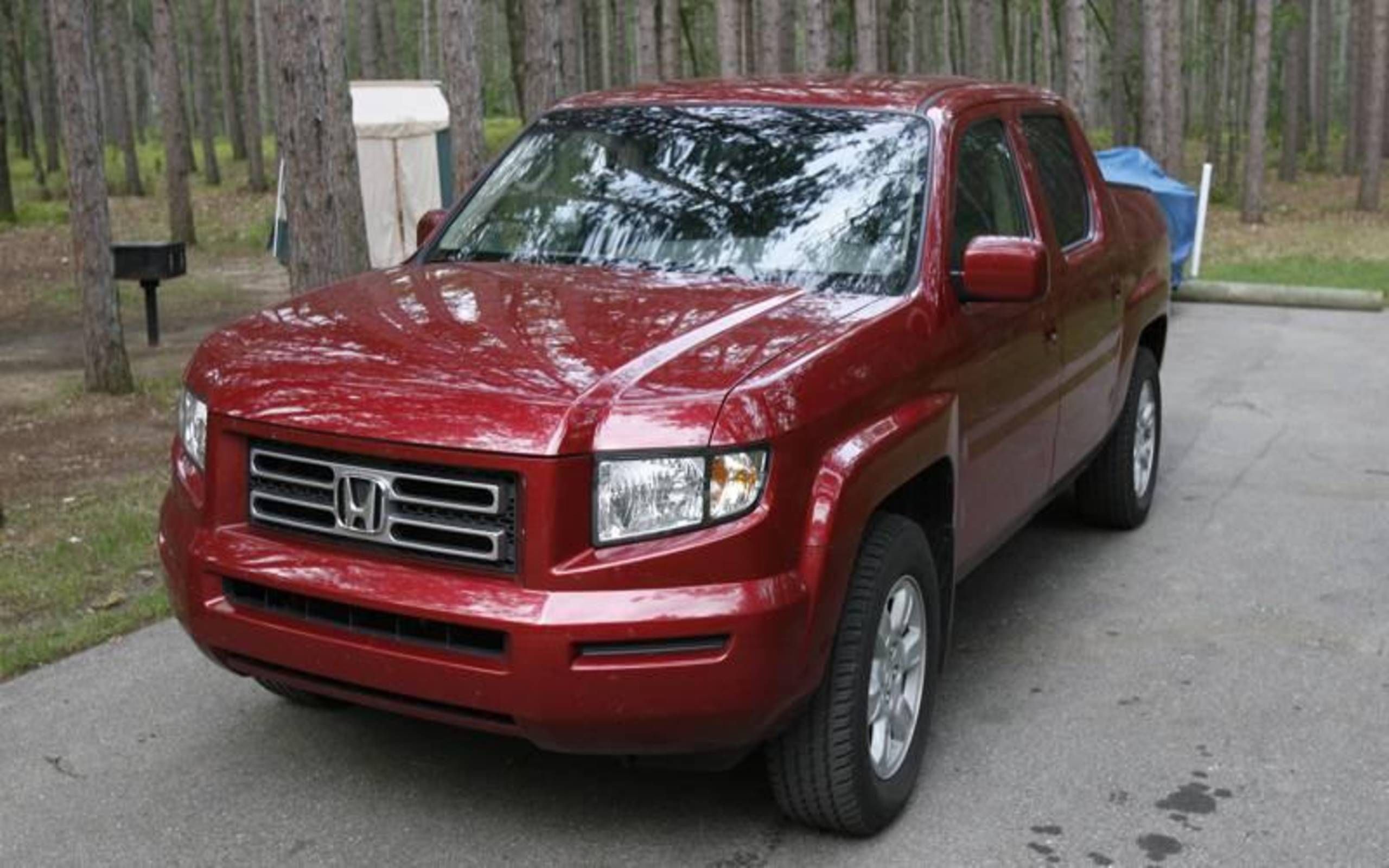
Beyond the electronic sophistication, the physical construction of Ridgeline engine mounts reflects Honda’s commitment to long-term durability. The rubber compounds used in these mounts undergo extensive testing for ozone resistance, temperature stability, and long-term elasticity retention.
Honda’s quality control processes ensure that each mount meets strict specifications for rubber hardness, dimensional accuracy, and fluid sealing in the case of hydraulic mounts.
The mounting brackets and metal components feature Honda’s advanced corrosion protection systems, which include multiple coating layers and careful attention to drainage and moisture management.
This attention to detail prevents the premature corrosion that can plague engine mounts in harsh environments, ensuring that the structural components of the mounting system remain sound throughout the vehicle’s service life.
Field reports consistently show Ridgeline engine mounts providing exceptional service life, with many examples exceeding 150,000 miles without replacement.
This longevity is particularly impressive given the sophisticated nature of the mounting system and the electronic components involved. Honda’s commitment to quality control and conservative engineering ensures that even the complex ACM system maintains its performance characteristics throughout the vehicle’s expected service life.
5 Trucks That Constantly Fail Engine Mounts
These problematic mounting systems suffer from inadequate design and substandard materials that lead to premature failure and costly drivetrain damage well before reaching typical replacement intervals under normal operating conditions.
Their inferior construction includes undersized brackets and cheap rubber compounds that cannot withstand the stress forces generated by modern high-output engines during routine towing and hauling operations.
From heat cycling that causes rapid deterioration to normal vibration that creates stress cracks, these defective engine mounts develop separation and complete failure that damages surrounding components.
Owners frequently report multiple mount replacements before 100,000 miles with these unreliable trucks expensive repairs that often require transmission removal and create dangerous driving conditions when mounts fail unexpectedly.
1. Jeep Compass (2007-2017 Generation)
The Jeep Compass, particularly models produced between 2007 and 2017, represents one of the most problematic vehicles in terms of engine mount reliability.
This compact SUV, built during Chrysler’s tumultuous ownership changes and financial difficulties, suffered from numerous cost-cutting measures that significantly impacted component quality, with engine mounts being among the most affected systems.
The primary issues with Compass engine mounts stem from fundamental design compromises and material quality problems. The mounting system employs a basic three-point configuration, but the execution falls far short of engineering best practices.
The rubber compounds used in these mounts are notably inferior to those found in competing vehicles, with a tendency to degrade rapidly when exposed to engine heat, ozone, and oil contamination.
Laboratory analysis of failed Compass engine mounts reveals rubber compounds with poor cross-linking density and inadequate antioxidant packages, leading to premature hardening and cracking.
The front engine mount is particularly problematic, with a design that concentrates stress in vulnerable areas of the rubber element. The mount’s shape creates stress concentration points that act as crack initiation sites, leading to predictable failure patterns typically occurring between 40,000 and 70,000 miles.
When this mount fails, drivers experience severe engine movement during acceleration and deceleration, accompanied by loud clunking noises and noticeable cabin vibration.
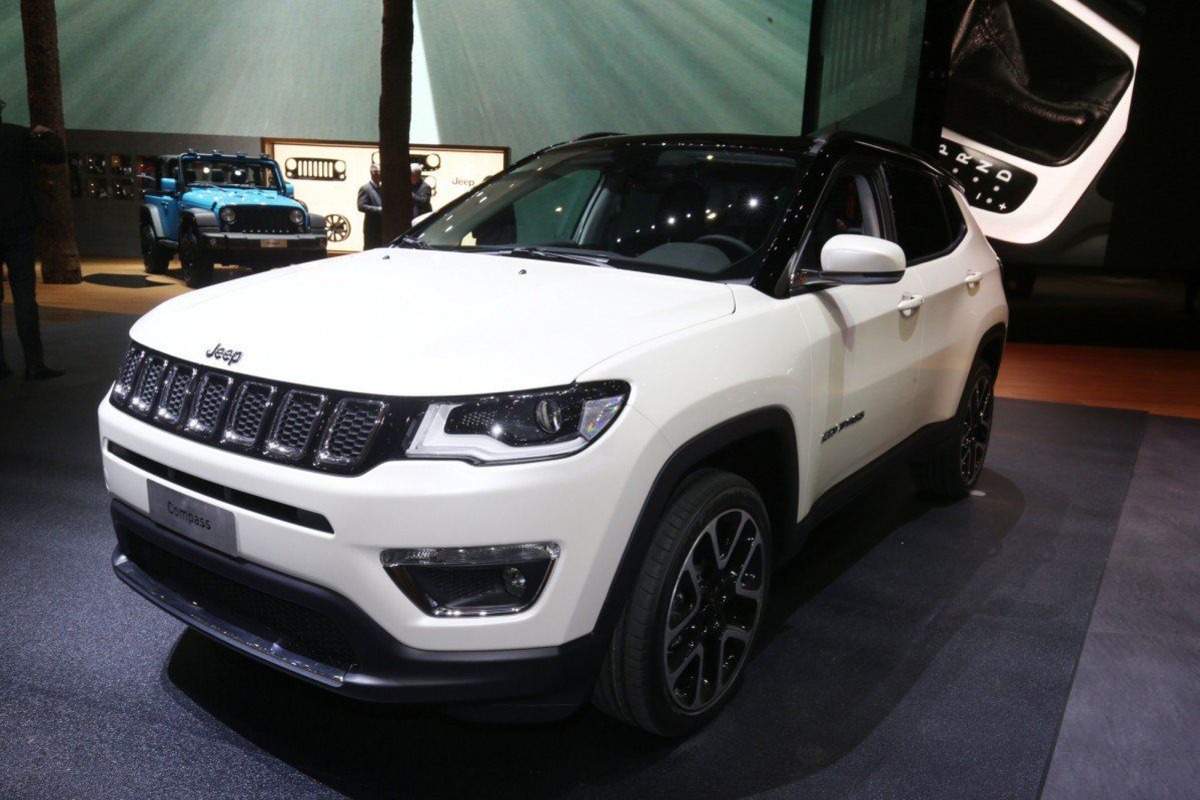
Manufacturing quality control issues compound these design problems. Inconsistent rubber curing processes result in mounts with varying durability characteristics, even within the same production batch.
Some mounts may fail within 30,000 miles, while others from the same production run might last slightly longer, creating an unpredictable reliability scenario for owners.
The side engine mounts suffer from similar quality issues, with the added problem of inadequate environmental sealing. Water intrusion into the mount assemblies accelerates rubber degradation and promotes corrosion of internal metal components.
In regions with harsh winters where road salt is common, this problem is particularly severe, with mount failures occurring as early as 25,000 miles in some cases.
Replacement costs for Compass engine mounts are substantial, typically ranging from $800 to $1,500 depending on which mounts require replacement and local labor rates.
The frequency of these failures has created a significant burden for Compass owners, with many vehicles requiring multiple engine mount replacements throughout their service life.
This reliability issue has contributed significantly to the Compass’s poor reputation for long-term ownership costs and has made it one of the least recommended vehicles in the compact SUV segment from a reliability standpoint.
2. Dodge Journey (2009-2020 Generation)
The Dodge Journey’s engine mount problems represent a masterclass in how cost reduction can severely compromise component reliability. Throughout its production run from 2009 to 2020, the Journey suffered from persistent engine mount failures that plagued owners and contributed to the vehicle’s poor reliability reputation.
These issues stem from a combination of inadequate design, poor material selection, and insufficient quality control during manufacturing. The Journey’s engine mounting system employs a four-mount configuration that appears robust on paper but fails dramatically in practice.
The primary issue lies in the rubber compound formulation, which lacks the sophisticated additives necessary for long-term durability in automotive applications.
Chemical analysis of failed Journey engine mounts reveals rubber with poor resistance to heat cycling, inadequate ozone protection, and insufficient oil resistance, leading to rapid degradation when exposed to typical engine bay conditions.
The upper engine mount, positioned near the top of the engine bay, is particularly susceptible to failure due to its exposure to high temperatures from the engine and exhaust components.
This mount typically begins showing signs of deterioration within 50,000 miles, with complete failure often occurring before 75,000 miles. When this mount fails, the engine exhibits excessive movement during acceleration, creating a pronounced rocking motion that can be felt throughout the vehicle.

The lower engine mounts suffer from different but equally serious problems. These mounts are positioned in areas where they’re exposed to road spray and environmental contaminants, but their design lacks adequate protection against water intrusion and chemical exposure.
The rubber elements in these mounts tend to swell and soften when exposed to automotive fluids, leading to loss of structural integrity and eventual complete failure.
Manufacturing inconsistencies exacerbate these design problems significantly. Quality control during the Journey’s production was notoriously poor, with engine mounts showing wide variations in rubber hardness, dimensional accuracy, and overall build quality.
This inconsistency means that some Journey vehicles may experience engine mount failures as early as 30,000 miles, while others might reach 80,000 miles before experiencing problems, creating an unpredictable reliability scenario.
The consequences of Journey engine mount failures extend beyond simple vibration and noise issues. Failed mounts can allow excessive engine movement that damages surrounding components, including wiring harnesses, vacuum lines, and cooling system components.
In severe cases, engine mount failure can lead to transmission mount failure, creating a cascade of expensive repairs that can easily exceed the vehicle’s value.
3. Chevrolet Equinox (2010-2017 Generation)
The second-generation Chevrolet Equinox, produced from 2010 to 2017, gained an unfortunate reputation for premature engine mount failures that consistently occur well before typical wear-out periods.
This compact SUV’s engine mount problems represent a significant departure from General Motors’ typically reliable engineering, highlighting how cost pressures and design compromises can undermine component durability.
The Equinox’s engine mount issues are particularly frustrating because they affect a vehicle that otherwise demonstrates reasonable reliability in most other systems.
The mounting system utilizes a conventional three-point configuration, but the execution incorporates several design flaws that virtually guarantee premature failure.
The most significant issue involves the rubber compound selection, which prioritizes cost reduction over durability characteristics. Laboratory analysis of failed Equinox engine mounts reveals rubber compounds with inadequate sulfur cross-linking and insufficient antioxidant protection.
These deficiencies result in rubber that hardens and becomes brittle much more rapidly than properly formulated compounds. The hardening process typically begins around 40,000 miles and accelerates rapidly, leading to crack formation and eventual complete failure of the rubber elements.
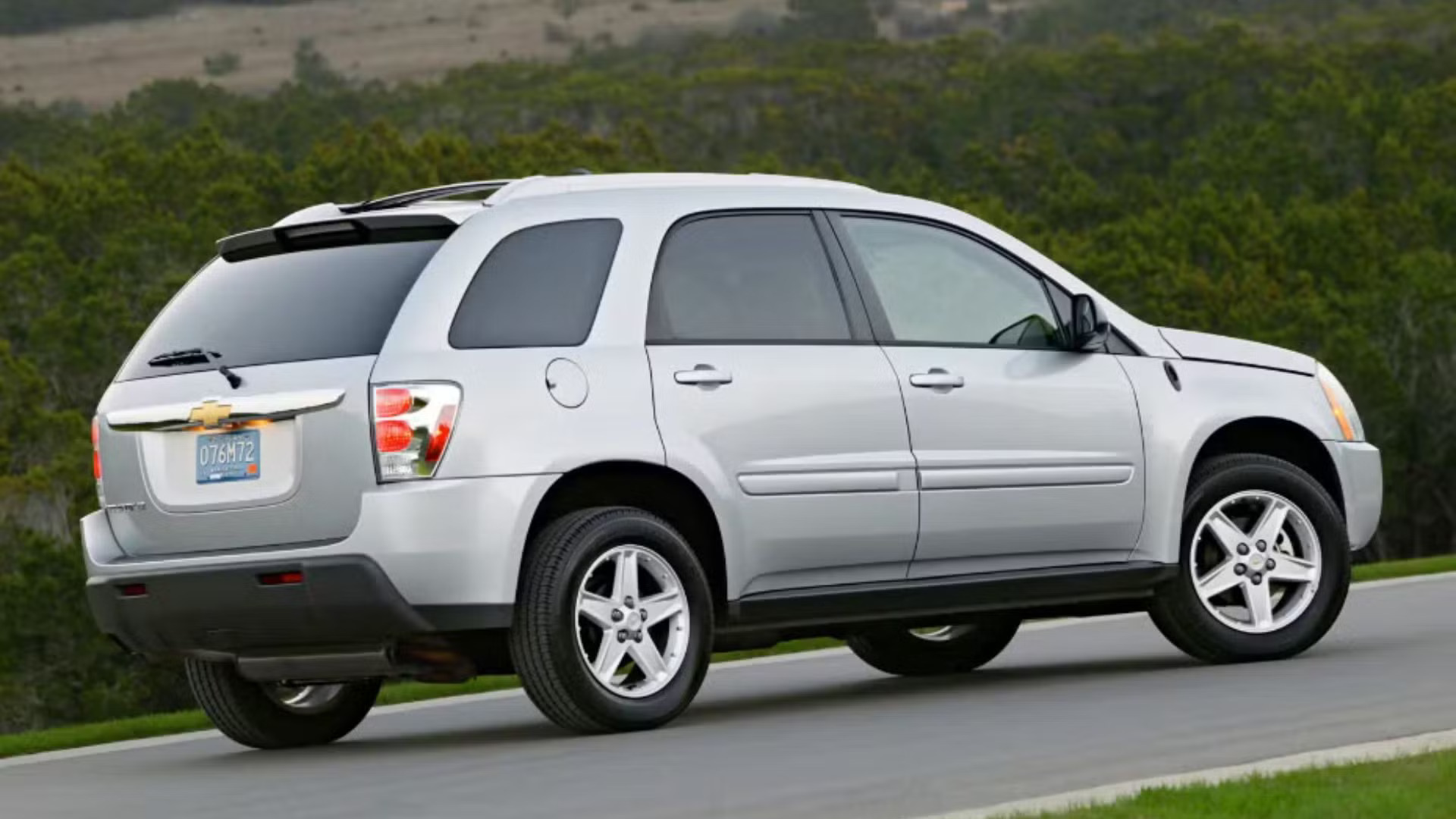
The front engine mount is the most problematic component in the system, with a design that creates uneven stress distribution across the rubber element.
The mount’s configuration includes a pronounced step in the rubber profile that acts as a stress concentrator, leading to predictable crack initiation at this location.
When examined under magnification, failed mounts consistently show crack patterns that originate from these stress concentration points, indicating a fundamental design flaw rather than random material failure.
The side engine mounts suffer from different but equally serious problems related to environmental exposure. These mounts lack adequate protection against ozone and UV radiation, both of which accelerate rubber degradation.
In vehicles operated in sunny climates, these mounts often show signs of surface cracking and hardening within 50,000 miles, with complete failure typically occurring before 80,000 miles.
Quality control issues during manufacturing compound these design problems significantly. Inconsistent rubber curing processes result in mounts with varying degrees of cross-linking, leading to unpredictable service life even among vehicles from the same production period.
Some Equinox owners report engine mount failures as early as 35,000 miles, while others may not experience problems until beyond 75,000 miles, creating significant uncertainty for owners trying to budget for maintenance.
The financial impact of these failures is substantial, with replacement costs typically ranging from $700 to $1,200, depending on which mounts require replacement.
The frequency of these failures has created a significant aftermarket for improved replacement mounts, with several companies offering upgraded designs that address the original engineering deficiencies.
4. Ford Escape (2013-2019 Generation)
Ford’s third-generation Escape, produced from 2013 to 2019, represents a disappointing step backward in engine mount reliability for a manufacturer traditionally known for durable truck and SUV components.
The Escape’s engine mount problems are particularly notable because they affect a vehicle that was extensively redesigned and re-engineered, suggesting that the issues stem from fundamental design decisions rather than aging technology or manufacturing problems.
The Escape’s engine mount system employs a four-mount configuration that incorporates both conventional rubber mounts and more sophisticated hydraulic mounts, depending on the engine option and trim level.
While this mixed approach was intended to optimize both cost and performance, it has resulted in a system with multiple failure modes and unpredictable reliability characteristics.
The hydraulic engine mounts used in higher-trim Escape models are particularly problematic, with seal failures occurring much earlier than expected.
These mounts rely on contained hydraulic fluid to provide variable damping characteristics, but the sealing system proves inadequate for long-term durability.
Seal degradation typically begins around 45,000 miles, leading to fluid leakage that progressively reduces the mount’s effectiveness. Complete seal failure usually occurs before 70,000 miles, resulting in mounts that provide little vibration isolation and allow excessive engine movement.
The conventional rubber mounts used in base-model Escapes suffer from material quality issues similar to those found in other problematic Ford products from this era.

The rubber compounds exhibit poor resistance to heat cycling and ozone exposure, leading to premature hardening and cracking. These mounts typically begin showing signs of deterioration around 50,000 miles, with complete failure often occurring before 85,000 miles.
A particularly problematic aspect of Escape engine mount failures involves the upper engine mount, which is positioned in a location that makes replacement exceptionally difficult and expensive.
This mount requires extensive disassembly of surrounding components for access, often including removal of the intake manifold and various engine accessories.
Labor costs for replacing this mount alone can exceed $800, making it one of the most expensive engine mount repairs in the compact SUV segment.
The consequences of Escape engine mount failures extend beyond simple comfort and noise issues. Failed mounts can allow sufficient engine movement to damage wiring harnesses and vacuum lines, leading to secondary problems that can be difficult to diagnose and expensive to repair.
In some cases, excessive engine movement has resulted in damage to the cooling system and air conditioning components, creating repair bills that can easily exceed $2,000.
Quality control inconsistencies during Escape production have created significant variation in mount durability, even among vehicles from the same model year and production facility.
This variability makes it difficult for owners to predict when mount replacement might be necessary, complicating maintenance planning and budgeting. Some Escape owners report mount failures as early as 30,000 miles, while others may not experience problems until well beyond 80,000 miles.
5. Hyundai Santa Fe (2013-2018 Generation)
The third-generation Hyundai Santa Fe, produced from 2013 to 2018, developed a notorious reputation for engine mount failures that consistently occur well before expected wear-out periods.
These problems are particularly disappointing given Hyundai’s significant improvements in overall vehicle quality during this period, and they highlight how component-specific engineering deficiencies can undermine an otherwise solid vehicle design.
The Santa Fe’s engine mount problems stem from a combination of inadequate material selection and design compromises that prioritize initial cost over long-term durability.
The mounting system employs a conventional four-mount configuration, but the execution incorporates several critical flaws that virtually guarantee premature failure under normal operating conditions.
The most significant issue involves the rubber compound formulation used throughout the mounting system. Chemical analysis of failed Santa Fe engine mounts reveals compounds with inadequate antioxidant packages and poor cross-linking density, resulting in rubber that degrades rapidly when exposed to typical automotive operating conditions.
The degradation process typically begins around 35,000 miles and accelerates quickly, leading to visible cracking and hardening that compromises mount effectiveness.
The front engine mount is particularly problematic, with a design that creates severe stress concentrations in the rubber element. The mount’s configuration includes sharp transitions between thick and thin rubber sections, creating areas where stress levels exceed the material’s fatigue limits.

These stress concentrations lead to predictable crack initiation and propagation, resulting in mount failure that typically occurs between 45,000 and 65,000 miles.
The upper engine mount presents unique challenges due to its positioning near heat sources and its exposure to engine bay temperature cycling. This mount lacks adequate heat shielding, resulting in rubber degradation that occurs more rapidly than in other mounting locations.
The combination of heat exposure and inadequate material selection creates a perfect storm for premature failure, with many Santa Fe owners reporting upper mount failures as early as 40,000 miles.
Manufacturing quality control issues significantly compound these design problems. Inconsistent rubber curing processes result in mounts with varying degrees of cross-linking and different durability characteristics, even within the same production batch.
This variability creates an unpredictable reliability scenario where some vehicles may experience mount failures very early in their service life, while others from the same production period may last somewhat longer.
The financial impact of Santa Fe engine mount failures is substantial, with replacement costs typically ranging from $900 to $1,600, depending on which mounts require replacement and local labor rates.
The frequency of these failures has created a significant burden for Santa Fe owners, with many vehicles requiring multiple engine mount replacements throughout their service life.
This reliability issue has contributed to the Santa Fe’s declining resale values and has made it one of the less recommended vehicles in the mid-size SUV segment from a long-term ownership cost perspective.
Also Read: 5 Cars With Transmissions That Never Slip and 5 That Always Jerk

